The Back-UP Project
Back-UP is a project funded by the Horizon 2020 Programme of the European Commission (Grant Agreement no. 777090), to develop a new health care platform with a prognostic model to support more effective and efficient management of neck and low back pain. This platform is based on the digital representation of multidimensional clinical information, and in-silico assessments of possible interventions.
Back-UP takes into account the multiple factors that influence the course of neck and low back pain, modelling it with the data of the following health dimensions:
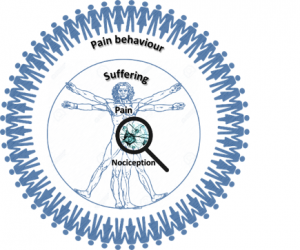
- Biological
- Musculoskeletal
- Psychological
- Behavioural
- Socioeconomic
- Work place & life style
Based on patient-specific models that use those data, Back-UP is designed to provide estimates of the time frame of improvement, time to return to work in the case of sick workers, risk of recurrence, and musculoskeletal function, as well as direct and indirect economic costs of chosen interventions.

Back-UP is a platform addressed to clinicians, occupational health services and patients, which will assist them through the whole cycle from the first visit in primary care to return to work. It is based on the knowledge and research data gathered by lead international experts in this field, and three cutting-edge technological platforms: MULTI-X, Antari Home Care, and selfBACK.
Project Work Plan
Back-UP is a 3-year project running from January 1st 2018 to December 31th 2020, and it is structured in the following work packages.
WP 1. System requirements
The objective of this work package is to define the use cases that will have to be managed by the Back-UP platform developed in the project, the interfaces with users of, and the conditions in which health data shall be collected, stored and managed, according to legal and procedural constraints, and technical requirements related to their use in a prognostic in-silico system.
WP 2. Biological models
This work package collects and merges the available evidence on the influence of the patient’s biological profile at the molecular and full-body scales on NLBP, in order to build a computational model that may help to predict the risk of NLBP chronification and recurrence, and expected times to improvement, on the basis of biomarkers, biomechanical assessments, and physical activity.
WP 3. Psychosocial and economic models
The objective of this work package is to collect clinical evidence and socioeconomic statistics that will be used to model the influence of psychological and social factors on the development and coping of pain, and available tools to quantify such relations in terms of personalised odd ratios, depending on personal characteristics, lifestyle, workplace and clinical scales. Special consideration will be given to socioeconomic aspects related to the workplace and work disability.
WP 4. Intervention and prevention measures
This work package is aimed to define the stratified care interventions and identify the patient profiles that are likely to respond well to such interventions, in the clinical and work place settings. The Back-UP stratification algorithm will be defined, and evaluated in terms of acceptability and face validity.
WP 5. Back-UP system integration
This work package integrates all components into a unified system, enabled by an informative data/metadata infrastructure for access, and by a highly flexible and scalable pipeline/workflow system for data analytics and interpretation. This will enable the incorporation of data integration and computational tools developed in previous work packages to integrate various biomedical data sources into the clinical studies, including imaging, biochemical, genetic, clinical, and environmental data sources.
WP 6. Data collection and validation
The objectives of this work package are: extend the databases that are used by Back-UP prognostic models to improve their accuracy, test the validity of the models in a retrospective and a prognostic study, and test the usability and user satisfaction of the integrated Back-UP system.
WP 7. Innovation management and impact assessment
This work packages has the objective to perform an economic technology impact assessment to informs industry, end-users and policy-makers with evidences about how Back-UP technologies may: (a) improve the management of neck or low back disorders as a complex multifactorial issue; (b) advance integrated, patient-centred care and management across diverse medical services and professionals, and (c) reduce costs in the management of NLBD patients.
Business models will be designed as an integral part of exploitation planning, and we will manage the development of innovations, translate the innovation potential, and support the commercial introduction of new feasible products services, and predictive/therapeutic interventions.
WP 8. Project management and dissemination
This is a transversal work package to ensure that all activities are coordinated and performed in time to achieve the project objectives, manage the resources consumed in the project, control the risks and solve incidences that might arise during the execution of the project, and plan, generate, and communicate the results and clinical impact generated to broad ranges of audiences.
Key Project Figures
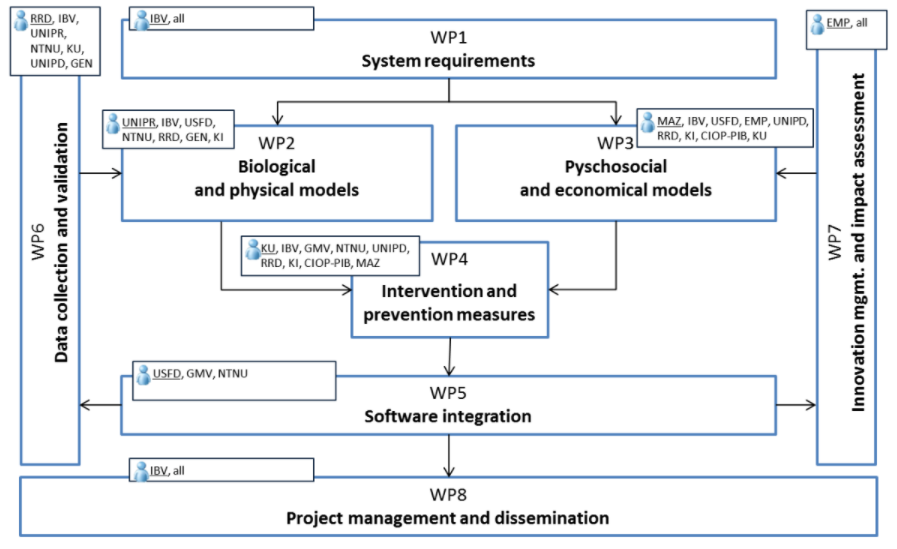
Project work plan 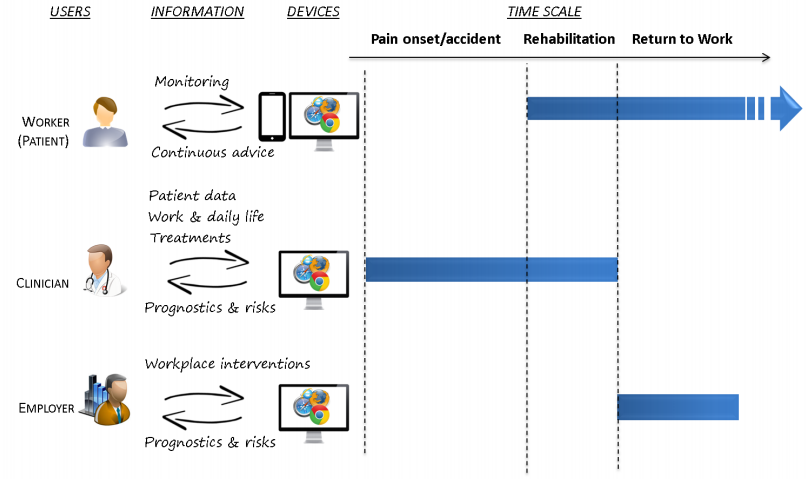
Use cases and information flow 
Exploitation model and IPR for project results 
Back-UP infrastructure components 
Back-UP modules 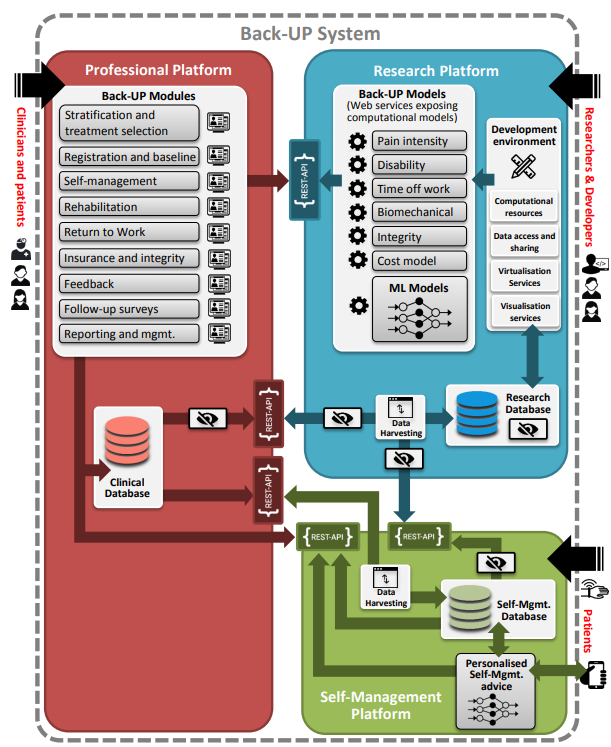
Back-UP system components and relations 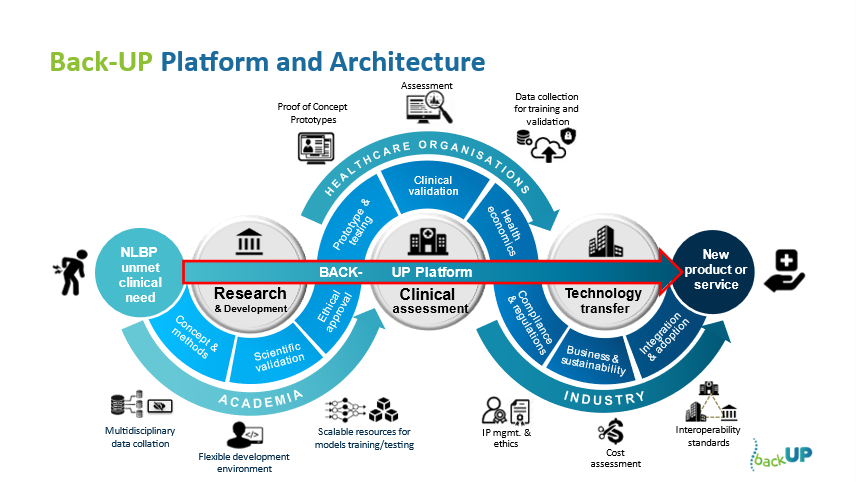
Framework for clinical translation in NLBP research
